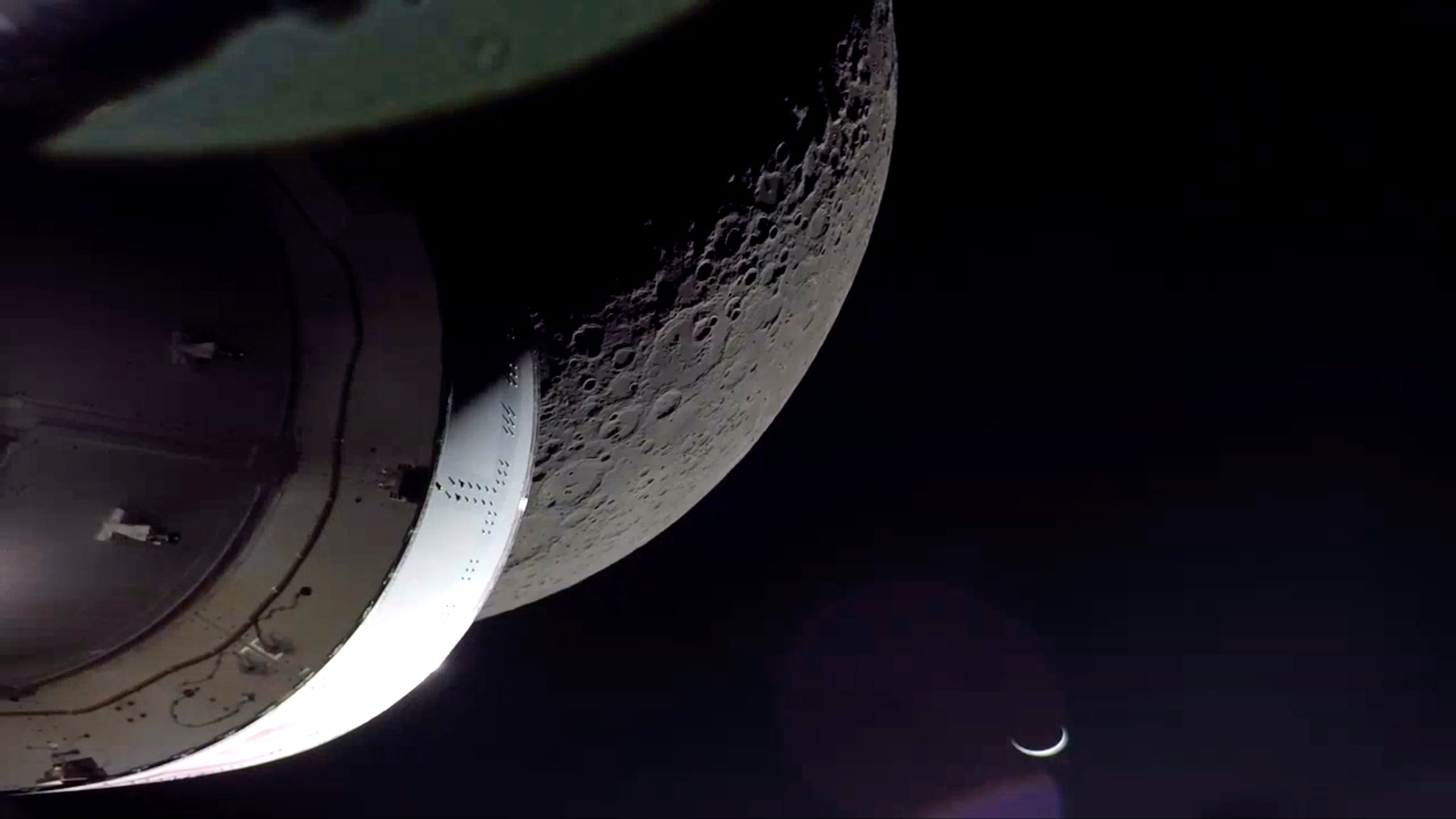NASA capsule flies over Apollo landing sites, heads home
NASA's Orion capsule is on its way home from the moon to wrap up a three-week test flight

Your support helps us to tell the story
From reproductive rights to climate change to Big Tech, The Independent is on the ground when the story is developing. Whether it's investigating the financials of Elon Musk's pro-Trump PAC or producing our latest documentary, 'The A Word', which shines a light on the American women fighting for reproductive rights, we know how important it is to parse out the facts from the messaging.
At such a critical moment in US history, we need reporters on the ground. Your donation allows us to keep sending journalists to speak to both sides of the story.
The Independent is trusted by Americans across the entire political spectrum. And unlike many other quality news outlets, we choose not to lock Americans out of our reporting and analysis with paywalls. We believe quality journalism should be available to everyone, paid for by those who can afford it.
Your support makes all the difference.NASA’s Orion capsule and its test dummies swooped one last time around the moon Monday, flying over a couple Apollo landing sites before heading home.
Orion will aim for a Pacific splashdown Sunday off San Diego, setting the stage for astronauts on the next flight in a couple years.
The capsule passed within 80 miles (130 kilometers) of the far side of the moon, using the lunar gravity as a slingshot for the 237,000-mile (380,000-kilometer) ride back to Earth. It spent a week in a wide, sweeping lunar orbit.
Once emerging from behind the moon and regaining communication with flight controllers in Houston, Orion beamed back photos of a close-up moon and a crescent Earth — Earthrise — in the distance.
“Orion now has its sights set on home," said Mission Control commentator Sandra Jones.
The capsule also passed over the landing sites of Apollo 12 and 14. But at 6,000 miles (9,600 kilometers) up, it was too high to make out the descent stages of the lunar landers or anything else left behind by astronauts more than a half-century ago. During a similar flyover two weeks ago, it was too dark for pictures. This time, it was daylight.
Deputy chief flight director Zebulon Scoville said nearby craters and other geologic features would be visible in any pictures, but little else.
“It will be more of a tip of the hat and a historical nod to the past," Scoville told reporters last week.
The three-week test flight has exceeded expectations so far, according to officials. But the biggest challenge still lies ahead: hitting the atmosphere at more than 30 times the speed of sound and surviving the fiery reentry.
Orion blasted off Nov. 16 on the debut flight of NASA's most powerful rocket ever, the Space Launch System or SLS.
The next flight — as early as 2024 — will attempt to carry four astronauts around the moon. The third mission, targeted for 2025, will feature the first lunar landing by astronauts since the Apollo moon program ended 50 years ago this month.
Apollo 17 rocketed away Dec. 7, 1972, from NASA's Kennedy Space Center, carrying Eugene Cernan, Harrison Schmitt and Ron Evans. Cernan and Schmitt spent three days on the lunar surface, the longest stay of the Apollo era, while Evans orbited the moon. Only Schmitt is still alive.
___
The Associated Press Health and Science Department receives support from the Howard Hughes Medical Institute’s Department of Science and Educational Media Group. The AP is solely responsible for all content.